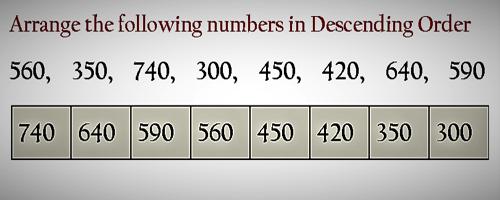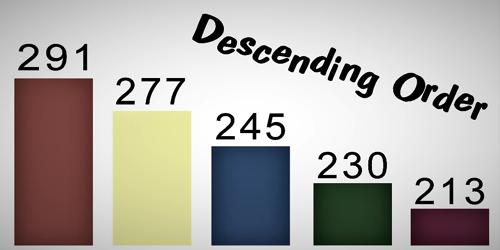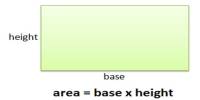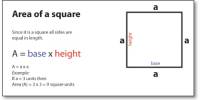Ordering Descending Numbers
Numbers have an order or arrangement. The number two is between one and three. Three or more numbers can be placed in order. A number may come before the other numbers or it may come between them or after them.
Example: If we start with the numbers 4 and 8, the number 5 would come between them, the number 9 would come after them and the number 2 would come before both of them.
The order may be ascending (getting larger in value) or descending (becoming smaller in value).
Three or more numbers can be placed in order. A number may come before the other numbers or it may come between them or after them.
Example: If we start with the numbers 4 and 8, the number 5 would come between them, the number 9 would come after them and the number 2 would come before both of them. Numbers are said to be in descending order when they are arranged from the largest to the smallest number. E.g. 25, 21, 17, 13 and 9 are arranged in descending order.

Descending Order Rules
Counting in descending order does not always have to be done by subtracting one from the larger numbers; rather, descending order can be done in math in multiple ways.
In order to always successfully put numbers in descending order, there are three important rules to follow:
- Always start with the largest number
- Always make sure the numbers are in order from largest to smallest
- Always end with the smallest number
Example on arranging numbers in descending order:
Write in descending order: 32593; 60537; 28524; 57198
Solution:
Compare digits according to place value.
Descending order means arranging numbers from the largest number to the smallest number;
60537 > 57198 > 32593 > 28524
Information Source:
















